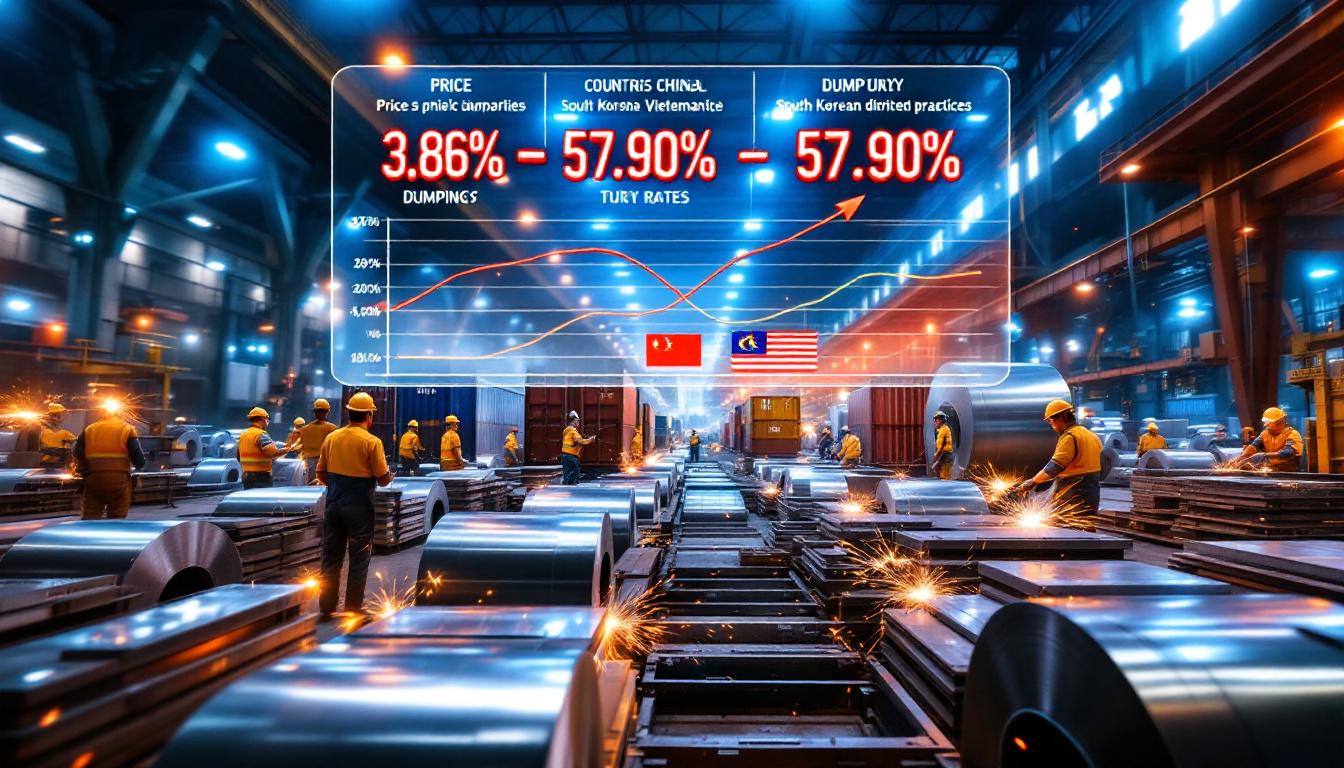What Factors Are Influencing Tangshan's Iron Ore Concentrates Market?
Current Price Landscape
Tangshan's iron ore concentrates market has maintained remarkable price stability, with 66% grade ore consistently priced at 930–940 yuan/mt (dry basis, tax included) throughout recent holiday periods. This pricing resilience underscores the balanced market dynamics at play in this critical steel-producing region. While transaction volumes have remained subdued, the price range has held firm, reflecting a careful equilibrium between supply constraints and steady demand patterns.
Regional price differentials between Tangshan and other iron ore hubs are primarily driven by transportation costs, local supply conditions, and quality specifications. These differentials have remained relatively stable, though they continue to fluctuate within narrow bands based on localized supply chain disruptions and purchasing behaviors.
Supply-Side Dynamics
The production status at local mines and beneficiation plants presents a nuanced picture. While overall output levels have remained largely stable, the resumption of production activities following holiday periods has been notably slower than anticipated. This sluggish return to full operational capacity has intensified resource tightness that was already present in the market.
This supply constraint serves as a primary factor supporting current price levels. Mining operations have maintained consistent output but haven't accelerated production to replenish depleted inventories at key distribution points. The resulting tight resource situation creates natural upward pressure on prices, counterbalancing cautious demand.
Inventory levels across key distribution hubs remain below historical averages, further constraining supply flexibility. This inventory situation limits sellers' ability to accommodate sudden demand increases, reinforcing the current price stability by preventing downward pressure.
How Are Steel Mills Affecting Iron Ore Demand?
Production Activities
A critical factor supporting iron ore concentrate demand is the absence of scheduled maintenance at regional steel mills. With blast furnaces operating at high utilization rates, pig iron production has maintained robust levels, necessitating steady iron ore consumption. This operational continuity provides fundamental support for concentrate prices.
Steel mills in the Tangshan region continue to operate at elevated capacity utilization rates, maintaining strong production volumes despite broader market uncertainties. This production discipline reflects mills' confidence in near-term steel demand and their operational strategies to maximize efficiency at current input costs.
The consistent pig iron output levels correlate directly with stable iron ore consumption rates, creating predictable demand patterns that help maintain market equilibrium. Any significant changes to blast furnace operations would likely create immediate ripple effects through the concentrate market.
Purchasing Behaviors
Mills have predominantly adopted as-needed purchasing strategies, approaching the market only when immediate requirements demand replenishment. This cautious approach limits inventory accumulation while ensuring operational continuity. The resulting transaction pattern features regular but moderated purchasing activity that prevents both price spikes and collapses.
Buyer-seller negotiations have settled into a balanced dynamic where neither side holds overwhelming leverage. Sellers resist significant price concessions due to tight resource availability, while buyers maintain disciplined purchasing patterns that avoid creating demand spikes. This standoff reinforces the current price stability.
Transaction volumes and frequency patterns reflect this cautious approach, with regular but moderate activity prevailing across the market. The preference for spot market transactions over long-term contracts highlights mills' desire to maintain flexibility amid uncertain market conditions.
What Are The Market Sentiment Indicators?
Transaction Activity
Current transaction volumes remain sluggish compared to historical averages, reflecting cautious market sentiment despite price stability. This subdued activity level doesn't indicate market weakness so much as a careful equilibrium where neither buyers nor sellers feel compelled to dramatically change their positions.
The market exhibits classic buyer-seller standoff dynamics, with resource constraints preventing sellers from offering significant discounts while conservative purchasing behaviors limit buyers' willingness to accept higher prices. This tension results in price stability despite relatively low transaction volumes.
Negotiation trends reveal buyers attempting to secure modest discounts while sellers hold firm on pricing, citing limited resource availability. The resulting compromise typically falls within the established price range, reinforcing market stability through consistent transaction patterns.
Regional Comparison
Tangshan's iron ore concentrate market maintains distinctive characteristics compared to other key trading hubs. Local supply chain dynamics, transportation infrastructure, and established buyer-seller relationships contribute to Tangshan's unique market profile, including slight price premiums compared to some alternative sources.
When compared to imported ore pricing, domestic Tangshan concentrates typically command modest premiums due to logistical advantages, quality consistency, and established supply relationships. These premiums fluctuate based on iron ore price volatility, transportation costs, and exchange rate movements.
Regional supply chain differences significantly influence local pricing, with Tangshan benefiting from relatively efficient transportation networks and established distribution channels. These infrastructural advantages help moderate price volatility compared to regions with less developed logistics systems.
What's The Short-Term Price Outlook For Tangshan Iron Ore Concentrates?
Price Stability Factors
Supply constraints continue to provide robust price support, creating a floor beneath current levels. The slow resumption of production at mines and beneficiation plants suggests these constraints will persist in the near term, maintaining upward pressure on prices.
Steady demand from operational steel mills balances these supply limitations, creating a market equilibrium that resists major price fluctuations. With blast furnaces running at high utilization rates and no major maintenance shutdowns planned, this demand foundation appears secure for the immediate future.
Market equilibrium assessments suggest the current price range (930-940 yuan/mt) represents a sustainable balance point given present supply-demand fundamentals. Without significant changes to either variable, dramatic price movements appear unlikely in the short term.
Risk Assessment
Potential disruptions to current market stability include unexpected production problems at major mines, which could exacerbate existing supply tightness. Conversely, any significant reduction in steel output would create downward pressure on concentrate prices.
Steel production policy influences remain a wild card, particularly regarding environmental restrictions or production quotas. Any sudden regulatory changes could significantly impact either supply or demand dynamics, disrupting the current market balance.
Seasonal factors typically affect iron ore markets through weather-related production disruptions and construction-driven steel demand fluctuations. However, current assessments suggest these seasonal patterns will likely reinforce rather than disrupt existing price stability in the near term.
How Does Tangshan's Market Compare To The Broader Iron Ore Landscape?
Domestic Market Integration
Tangshan's pricing maintains clear relationships with national iron ore markets, typically trading at modest premiums to other domestic sources. These premiums reflect Tangshan's strategic importance as a steelmaking hub and the quality specifications of its concentrate production.
Transportation and logistics factors significantly influence regional price differentials, with Tangshan benefiting from relatively efficient distribution networks. These logistics advantages help maintain competitive pricing despite resource constraints.
Futures market movements show correlations with Tangshan's spot prices, though with typical lags and basis differentials. These relationships help market participants manage price risks while providing forward price indicators for physical market negotiations.
Global Market Influences
International iron ore price trends exert indirect influence on Tangshan's market through import competition thresholds. When global prices drop significantly, imported alternatives become more attractive, creating ceiling pressure on domestic concentrates.
The import-domestic price relationship remains a key factor in market equilibrium, with arbitrage opportunities emerging when differentials exceed transportation and handling costs. Current resource tightness in Tangshan has temporarily reduced this price sensitivity.
Currency fluctuations, particularly yuan valuation changes against the US dollar, affect the price competitiveness of domestic concentrates versus imports. Recent iron ore prices surge alongside stabilized exchange rates has minimized this variable's impact on Tangshan's market dynamics.
What Quality Considerations Impact Tangshan's Iron Ore Pricing?
Grade Analysis
Price differentials between various concentrate grades reflect their relative value in steelmaking processes. Higher grades (65-66%) command significant premiums over standard grades (62%) due to enhanced blast furnace efficiency and reduced impurity management requirements.
Premium/discount mechanisms for quality variations are well-established in contract structures, with adjustments typically calculated on a pro-rata basis from benchmark grades. These mechanisms ensure pricing accurately reflects the metallurgical value of different concentrate specifications.
Impurity penalties significantly impact effective pricing, particularly for elements that complicate steelmaking or reduce end-product quality. Excessive silicon, aluminum, phosphorus, and sulfur content can trigger substantial discounts, sometimes exceeding the value difference between grade percentages.
Moisture content considerations play a crucial role in price calculations, as concentrate prices are typically quoted on a dry basis while physical delivery occurs with variable moisture content. This adjustment ensures buyers pay only for the iron-bearing material rather than contained water.
Processing Requirements
Beneficiation needs vary significantly between different ore qualities, creating implicit value differences beyond simple grade percentages. Concentrates requiring minimal additional processing command premiums reflective of these reduced handling requirements.
The cost implications of processing requirements directly influence effective pricing, with easily processed concentrates valued higher than those requiring extensive treatment, even at similar grade levels. These processing considerations create subtle but important price differentials within each grade category.
Steel mills maintain clear preferences for specific concentrate characteristics based on their production processes and equipment configurations. These preferences drive consistent demand patterns for concentrates that match particular blast furnace requirements or blend effectively with other iron sources.
FAQ: Iron Ore Concentrates Market in Tangshan
What grade of iron ore concentrates is most traded in Tangshan?
The 66% grade iron ore concentrates dominate the Tangshan market, with current delivery-to-factory prices ranging between 930-940 yuan/mt (dry basis, tax included). This grade preference reflects the optimal balance between iron content and price for most regional steel mills' operations.
Why are iron ore concentrate resources tight in Tangshan?
The tightness stems from the slow resumption of production at mines and beneficiation plants despite relatively stable overall production levels. This sluggish return to full capacity following holiday periods has prevented inventory rebuilding at distribution points, creating persistent supply constraints.
How are steel mills currently approaching iron ore purchases?
Steel mills are predominantly employing an as-needed purchasing strategy rather than building significant inventories. This approach reflects caution regarding future price movements and optimizes working capital utilization. The resulting transaction pattern features regular but moderate volume purchases that maintain operational requirements without creating demand spikes.
What factors are supporting iron ore concentrate prices in Tangshan?
The combination of tight local resources, high-level pig iron production from blast furnaces, and absence of maintenance plans at steel mills provides underlying support for prices. This three-sided foundation creates natural resistance to downward price movement despite relatively sluggish transaction volumes.
What is the expected price trend for Tangshan iron ore concentrates?
Based on current market conditions, prices are expected to remain stable in the short term, balancing tight supply against cautious purchasing behavior. Without significant changes to either production rates or steel mill operations, the current price range (930-940 yuan/mt) represents a sustainable equilibrium point.
Further Exploration:
Readers interested in learning more about iron ore market dynamics can also explore related educational content from Shanghai Metal Market, which offers regular updates on metal market trends across various sectors. For investors looking at broader resource markets, understanding both global commodities insights and China's resource stimulus measures can provide valuable context for developing effective mining investment strategies.
Interested in Tracking Mineral Discoveries That Could Yield Major Returns?
Discovery Alert's proprietary Discovery IQ model instantly provides actionable intelligence on significant ASX mineral discoveries, including iron ore finds, giving subscribers a market-leading advantage. Explore why mineral discoveries can generate substantial returns by visiting the Discovery Alert discoveries page and start your 30-day free trial today.




